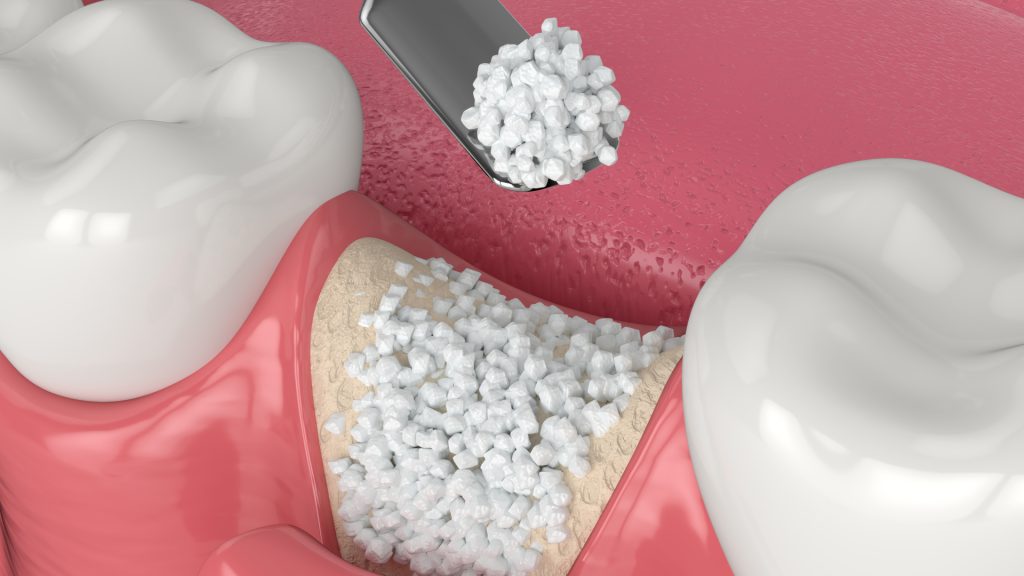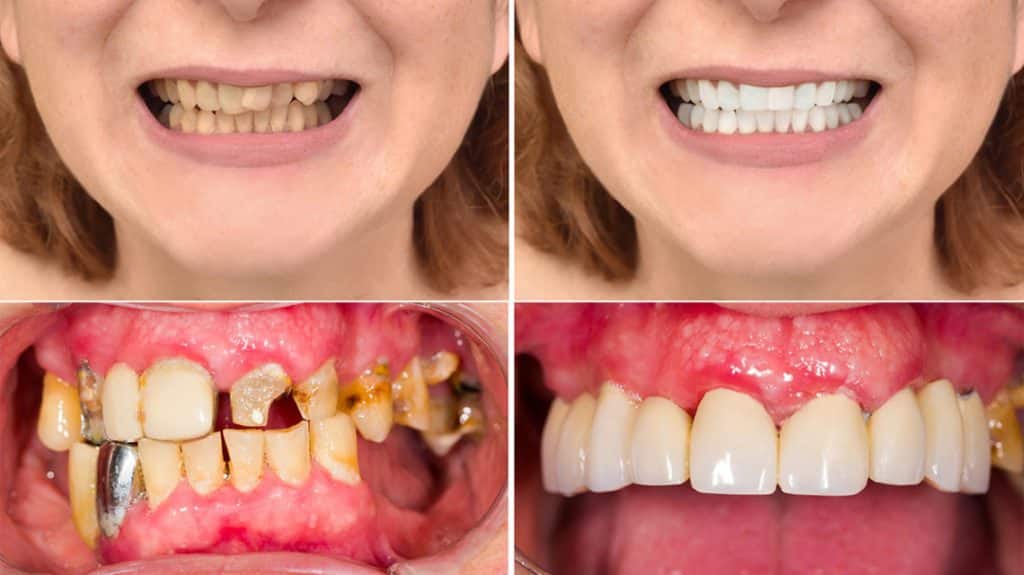A bone graft may be necessary during wisdom teeth extraction to promote proper healing and prevent complications. This procedure involves placing a small amount of bone material in the socket where the tooth was removed, allowing new bone to grow.
By supporting the surrounding tissues, a bone graft can help prevent issues such as bone loss or damage to nearby teeth. It is a common and effective technique used by dentists to ensure optimal outcomes following wisdom teeth removal.

Credit: www.bodyexpert.online
The Importance Of Bone Grafts For Wisdom Teeth Extraction
Bone grafts play a crucial role in ensuring a successful recovery after wisdom teeth extraction. They promote bone regeneration and stability, which is vital for oral health. By filling in the empty socket left by the extracted tooth, the graft stimulates new bone growth.
This process not only provides a strong foundation for future dental work but also prevents the deterioration of jawbone. Without a bone graft, the socket may not heal properly, leading to potential complications such as infection, shifting teeth, and the formation of cavities.
Moreover, bone grafts offer long-term benefits by preventing future dental problems. They help maintain the structural integrity of the jawbone and ensure the functionality and aesthetics of your smile. So, if you’re considering wisdom teeth extraction, remember the importance of bone grafts in ensuring a healthy and successful recovery.
Types Of Bone Grafts And Their Benefits
Bone grafts for wisdom teeth extraction can be done using the patient’s own bone (autografts), donated bone (allografts), bone from another species (xenografts), or man-made materials (synthetic bone grafts). Autografts have the advantage of using the patient’s own tissues, contributing to a higher success rate.
Allografts, on the other hand, offer a readily available supply without the need for an additional surgical site. Xenografts provide an alternative when human bone is unavailable. Synthetic bone grafts offer the benefit of being easily accessible and eliminating the risk of transmitting diseases.
However, each type of bone graft has its drawbacks, including possible infection, rejection, and the need for additional procedures. Understanding the advantages and disadvantages of each type is crucial for dentists and patients when deciding the best option for wisdom teeth extraction.
Preparing For A Wisdom Teeth Extraction With Bone Graft
Preparing for a wisdom teeth extraction with bone graft involves a consultation with an oral surgeon or dentist, who will evaluate your bone density and determine if grafting is necessary. They will also discuss anesthesia options and the potential risks involved.
Before the surgery, you will be given pre-operative preparation and instructions to follow. It is essential to carefully follow these instructions to ensure a successful procedure and optimal healing. The consultation is an opportunity to address any concerns or questions you may have about the bone graft procedure and to understand what to expect during the extraction.
The oral surgeon or dentist will guide you through the process, providing personalized care and ensuring your comfort and well-being throughout.
The Wisdom Teeth Extraction Procedure With Bone Graft
The wisdom teeth extraction procedure with bone graft involves a step-by-step breakdown of the surgical process. First, the impacted wisdom teeth are carefully extracted using specialized techniques. Various anesthesia and sedation options are available to ensure patient comfort during the procedure.
The bone grafting technique is then used to fill in any gaps left by the extraction, promoting healing and preventing complications. This procedure helps to strengthen the jawbone and provides support for dental implants if needed in the future. The process is performed with precision and care, minimizing discomfort and ensuring successful results.
Expert dentists are highly skilled in performing this procedure, delivering optimal outcomes for patients.
Post-Operative Care For Bone Graft Wisdom Teeth Extraction
After undergoing bone graft wisdom teeth extraction, it is crucial to follow immediate aftercare instructions and take necessary precautions. To effectively manage pain, swelling, and bleeding, consider taking prescribed medications and applying cold compresses. Maintaining good oral hygiene is essential, so gently brush your teeth and rinse your mouth with a saltwater solution.
It is important to follow eating guidelines, such as consuming soft foods and avoiding hot or spicy items. Don’t forget to schedule and attend follow-up appointments for monitoring your recovery and ensuring the success of the bone graft procedure. By adhering to these instructions, you can promote healing and minimize any potential complications.
Common Complications And How To Prevent Them
Bone grafting is a common procedure performed after wisdom teeth removal. Infection risks should be closely monitored, paying attention to possible symptoms such as swelling and persistent pain. Nerve damage can also occur, so preventive measures must be taken during the surgery.
Graft failure is a potential complication that may have various reasons behind it, necessitating further evaluation. To minimize post-operative complications, strategies can be implemented, such as diligently following post-operative care instructions, maintaining oral hygiene, and attending regular follow-up appointments. By being aware of these common complications and taking preventive measures, patients can help ensure a successful bone grafting procedure.
Healing Process And Recovery Timeline
The healing process and recovery timeline for bone graft wisdom teeth can be divided into several phases. These phases include the initial healing phase, the integration phase, and the final bone regeneration phase. The expected recovery timeline varies from person to person but generally takes several months.
Throughout the healing process, it is important to monitor for signs of successful grafting and bone regeneration, such as decreased pain and swelling, improved gum tissue health, and the formation of new bone. Regular check-ups with your dental professional will help ensure proper healing and provide guidance on any necessary adjustments to your oral care routine.
Patience and adherence to post-operative care instructions are key to a successful bone grafting procedure and a smooth recovery.
Long-Term Outlook And Oral Health Benefits
Bone grafts play a crucial role in the long-term oral health benefits of wisdom teeth extraction. By preserving the jawbone structure and stability, these grafts prevent tooth shifting and potential bite problems. Additionally, bone grafts create the foundation for future dental implant placement.
Maintaining the integrity of the jawbone is important not only for aesthetic reasons but also for overall oral health. Bone loss, if left untreated, can lead to further tooth loss and a deteriorating smile. With bone grafts, patients can ensure a solid foundation for their dental health, allowing them to enjoy the benefits of a healthy and attractive smile for years to come.
Frequently Asked Questions On Bone Graft Wisdom Teeth
What Is A Bone Graft For Wisdom Teeth?
A bone graft for wisdom teeth is a procedure where a dentist or oral surgeon adds bone material to the patient’s jawbone. This is done to create a solid foundation for the placement of dental implants or to support the healing of the extraction site.
Why Do I Need A Bone Graft For Wisdom Teeth Removal?
A bone graft may be necessary during wisdom teeth removal if the tooth’s extraction causes significant loss of bone in the jaw. The graft helps to rebuild the bone, enhance healing, and provide a stable base for future dental procedures like implant placement.
How Is A Bone Graft Performed For Wisdom Teeth?
During the bone graft procedure for wisdom teeth, the oral surgeon will administer local anesthesia to numb the area. Then, a small incision will be made in the gum tissue to access the bone. The graft material will be inserted into the area that needs augmentation, and the incision will be sutured closed.
What Are The Benefits Of A Bone Graft For Wisdom Teeth?
A bone graft during wisdom teeth removal offers several benefits. It promotes bone regeneration, reduces the risk of complications, improves the appearance of the jawline, and provides a stronger foundation for future dental work. It also helps to preserve the remaining bone and prevent potential issues, such as bone resorption.
Is A Bone Graft For Wisdom Teeth Painful?
The bone graft procedure for wisdom teeth is generally performed under local anesthesia, ensuring a pain-free experience during the surgery. Afterward, patients may experience some discomfort or swelling, but this can be managed with prescribed pain medications and following post-operative care instructions.
Conclusion
Bone grafting for wisdom teeth extraction is a crucial procedure that promotes faster healing and reduces the risk of complications. By filling the empty space left by the extracted tooth with a bone graft, patients can experience improved jaw structure and avoid potential issues such as shifting teeth and facial asymmetry.
Not only does a bone graft provide a solid foundation for dental implants, but it also helps preserve the integrity of the underlying bone structure. It is important for patients to understand the benefits of bone grafting and to consult with an experienced oral surgeon to determine individual needs and treatment options.
By taking proactive steps and seeking professional guidance, patients can ensure a smooth recovery process and long-term oral health. Don’t let the fear of extraction hold you back – bone grafting is a viable solution that can help you maintain a healthy and confident smile.








